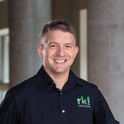Virtualization has become a fundamental technology in the modern IT landscape. While VMware has long been a dominant player in the virtualization space, there has been a growing demand for alternative platforms that offer similar features and capabilities.
Virtualization software is maturing, and organizations are deploying it more widely than ever before. This trend has led to a proliferation of virtualization platforms offering various features and capabilities. In a recent survey, 48% of IT professionals cited cost as the primary factor driving them to consider alternatives to VMware. The days of a one-size-fits-all virtualization platform are over. Today, customers need choice and flexibility to meet the needs of their organization.
In this six-part series about virtualization, we'll explain the pros and cons of Citrix Hypervisor (now XenServer as of March 2024), Red Hat OpenShift Virtualization, Microsoft Hyper-V, Oracle VM VirtualBox, Proxmox, and XCP-ng compared to VMware.
5 Benefits of Using Citrix Hypervisor (XenServer)
Formerly known as Citrix Hypervisor, XenServer is a powerful open-source virtualization platform that enables businesses to create and manage virtual machines on a large scale. It provides a highly scalable, secure, and efficient solution for managing virtualized workloads in data centers, clouds, and other IT environments.
XenServer offers a range of beneficial features that make it a viable alternative to VMware, including:
- High Availability and Disaster Recovery: XenServer includes built-in features for high availability and disaster recovery, ensuring that VMs remain available.
- Live VM Migration: XenServer supports live VM migration of VMs between physical servers.
- Performance And Scalability: XenServer is designed for high performance and scalability, supporting up to 288 physical cores and 12TB of RAM per host.
- Security: XenServer provides a secure virtualization environment, including support for secure boot, secure VM migration, and integration with Active Directory.
- Cost-effective: XenServer is a cost-effective alternative to VMware, with a lower cost of ownership and no licensing fees for many of its advanced features.
Disadvantages of Citrix Hypervisor (XenServer)
While XenServer offers many benefits as an alternative to VMware, there are some drawbacks to consider:
- Limited Third-party Support: XenServer has a smaller user base than VMware, which means fewer third-party integrations and tools are available.
- Steep Learning Curve: XenServer can be more challenging to set up and manage than VMware, particularly for those new to virtualization.
- Lack Of Some Advanced Features: While XenServer offers many advanced features, it lacks some of the more advanced features offered by VMware, such as vSphere Storage APIs for Array Integration (VAAI).
Embracing a new virtualization technology can be a daunting task, as it often comes with a learning curve. However, XenServer offers a seamless migration path and emerges as an excellent alternative to VMware. With its user-friendly features and smooth transition process, XenServer presents a compelling option for organizations seeking to explore new virtualization possibilities.
Explore how our managed service offerings can help streamline your virtualization journey. Our team of experts can assist with setup, configuration, and ongoing support to ensure an easy and seamless transition. Learn more about how our managed services can maximize your company's security.




